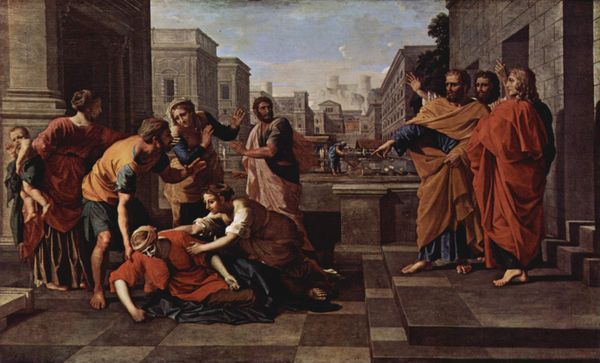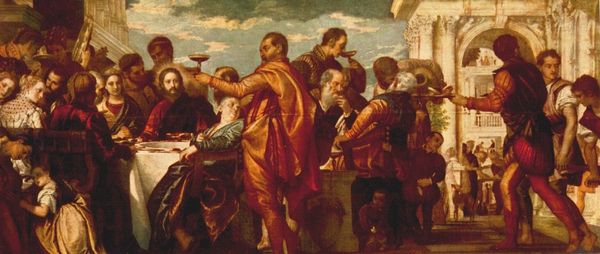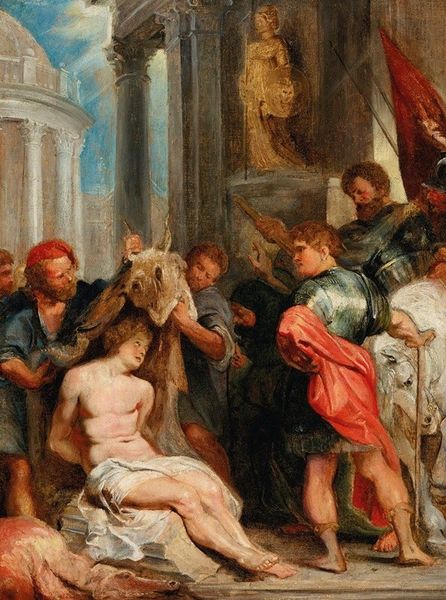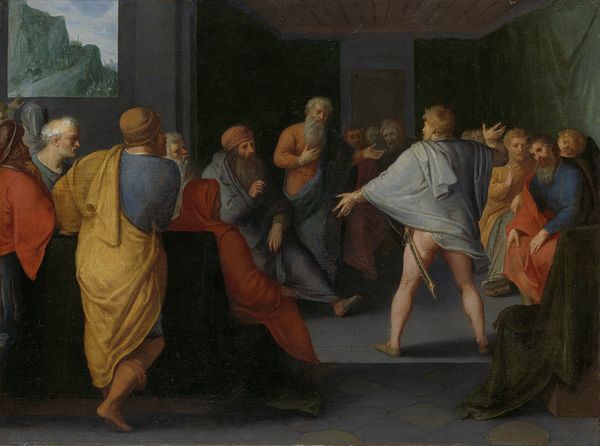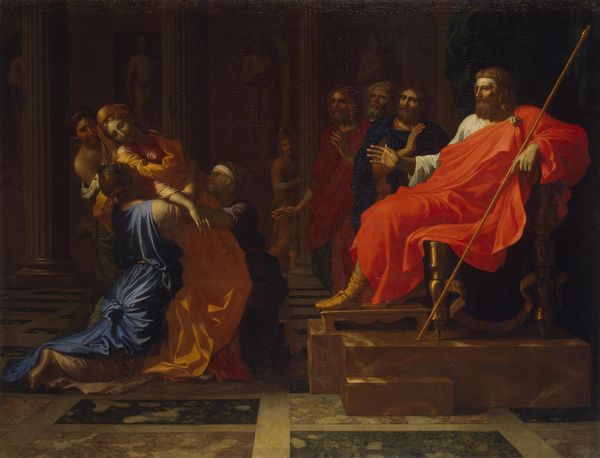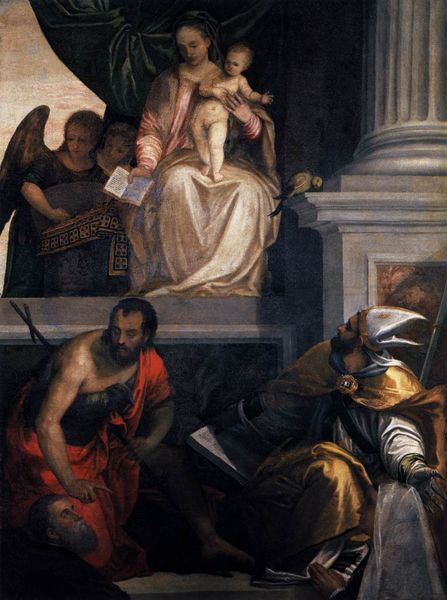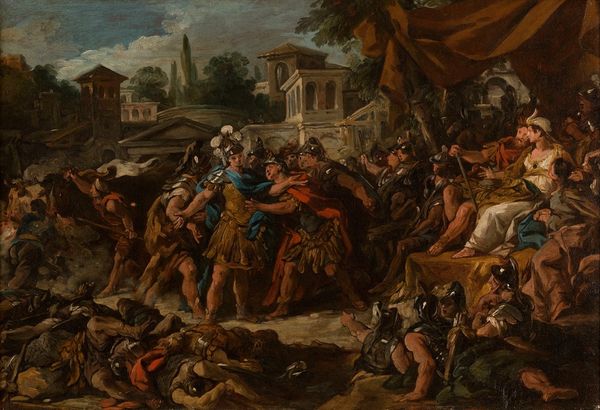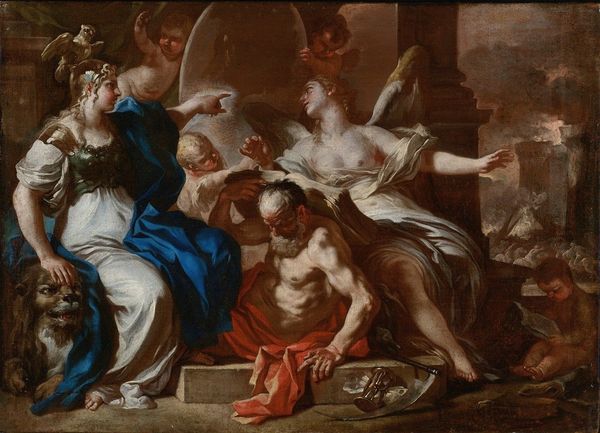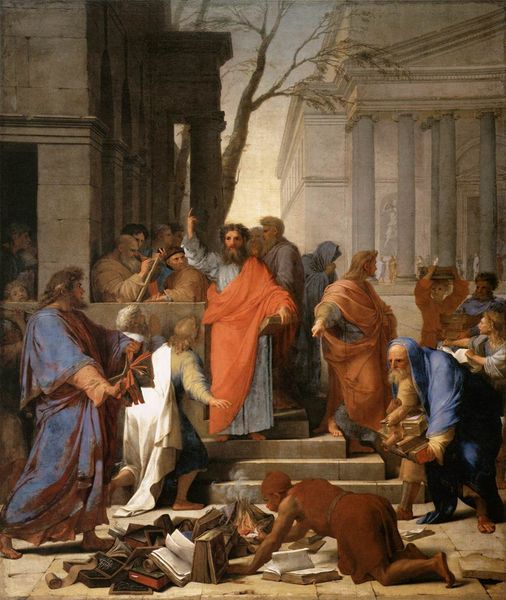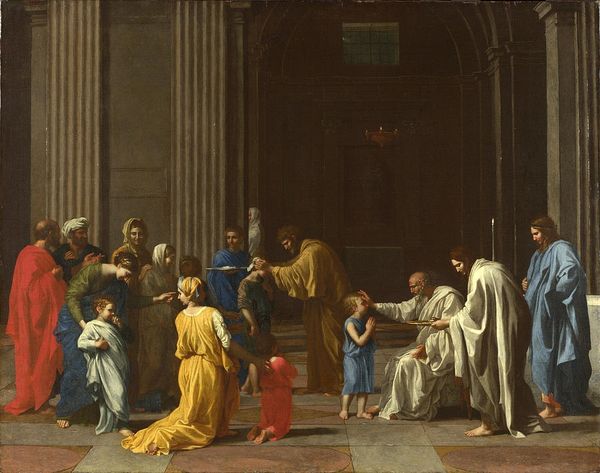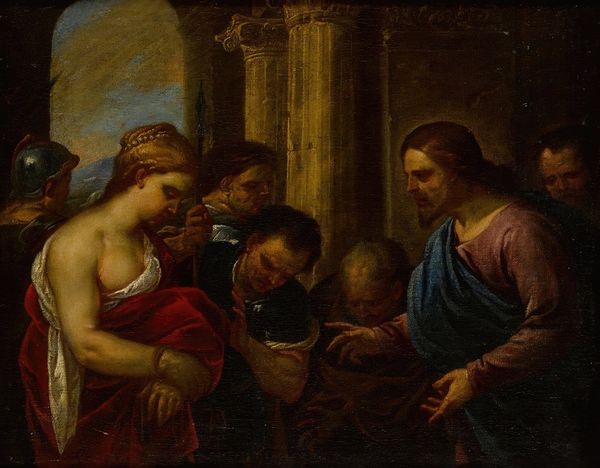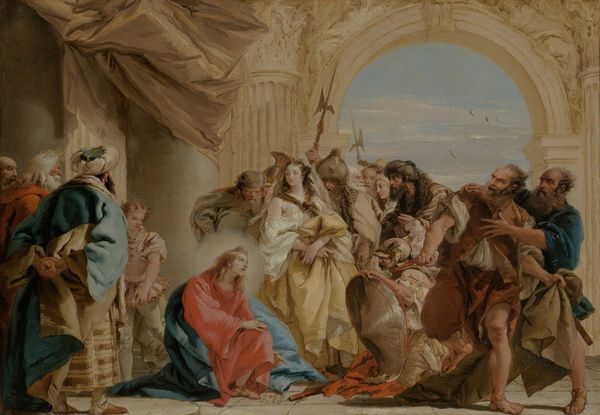
oil-paint
#
baroque
#
oil-paint
#
figuration
#
oil painting
#
history-painting
Copyright: Public Domain: Artvee
Editor: Sebastiano Ricci's oil painting, "Christ and the Woman Taken in Adultery," dating to around the 1720s, presents quite the scene. There’s almost a chaotic feel to the composition, heightened by the drama unfolding amongst these figures. What strikes you most when you view this artwork? Curator: Initially, the arrangement of figures into a pyramidal composition commands attention, drawing the eye toward the central grouping around Christ and the woman. The application of paint, particularly the impasto in the draperies, creates a dynamism that's visually engaging. What’s interesting is the contrast: observe the smooth treatment of Christ’s robe against the more agitated textures in the surrounding figures. It calls the viewer to appreciate the painting as a construction of color and form first. How does that materiality speak to you? Editor: It does create a kind of visual hierarchy. I also notice how the cool blues and grays of the background architecture contrast against the warmer reds and yellows of the clothing, which seems to further push the narrative elements to the forefront. It makes you focus on the tension. Curator: Precisely. Furthermore, consider how the play of light and shadow sculpts the figures, imbuing them with volume and presence. Light does not merely illuminate; it articulates form, guides the gaze. Consider the symbolic impact, where the source of light could evoke spiritual awakening or truth in art. How might those considerations influence your reaction to the painting's essence? Editor: That makes me see how the artist creates drama but does so within the formal structure of the painting itself, using those contrasts to highlight the central figures, but not necessarily to give them center stage by default. Curator: Precisely. And reflecting upon this dynamic reminds us that aesthetic interpretation always comes first. Editor: Definitely food for thought about Baroque paintings!
Comments
No comments
Be the first to comment and join the conversation on the ultimate creative platform.
